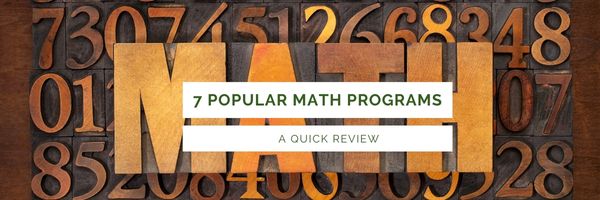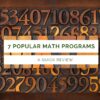17 St. Patrick’s Day Sites For the Classroom
 Getting ready for St. Patrick’s Day? Try these fun websites (check here for updated links):
Getting ready for St. Patrick’s Day? Try these fun websites (check here for updated links):
- Color the shamrock)
- Color the Pot-o-gold
- Color the leprechaun
- Puzzle–St. Pat’s Puzzle
- Puzzle–St. Pat’s puzzle II
- Puzzle–St. Pat’s drag-and-drop puzzle
- Puzzle–St. Pat’s slide puzzle
- Puzzles and games
- St. Patrick’s Day history–video
- St. Pat’s Day songs–video
- Tic tac toe
- Webquest for St. Patrick’s Day I
- Webquest II
- Wordsearch
If you have iPads at your school, try these three apps:
Share this:
- Click to share on Facebook (Opens in new window) Facebook
- Click to share on X (Opens in new window) X
- Click to share on LinkedIn (Opens in new window) LinkedIn
- Click to share on Pinterest (Opens in new window) Pinterest
- Click to share on Telegram (Opens in new window) Telegram
- Click to email a link to a friend (Opens in new window) Email
- More
International Blog Delurking Week–Get Involved!
 Believe it or not, there is an International Blog Delurking Week that traditionally takes place in the first full week of January. It’s an opportunity for bloggers to find out who quietly reads their blog without commenting. As Melissa the founder of this event says:
Believe it or not, there is an International Blog Delurking Week that traditionally takes place in the first full week of January. It’s an opportunity for bloggers to find out who quietly reads their blog without commenting. As Melissa the founder of this event says:
“…there is a huge discrepancy between the number of readers in actuality and the number of readers I actually know are reading. Or a tongue-twister like that.”
Yep, I noticed I missed that week. I was still getting the year started! But Melissa also says you can run it anytime you want so I’m taking advantage of that codicil.
OK, another yep–comments are always closed on this blog. So here’s what I’d love you to do:
- Follow Ask a Tech Teacher (sign up in the sidebar)
- Sign up for my newsletter
- Like and Follow us on Facebook
- Follow us on Twitter
If you do, you’ll probably find one of us over at your social media, checking things out in your corner of the tech ed world. We love a good road trip!
Share this:
- Click to share on Facebook (Opens in new window) Facebook
- Click to share on X (Opens in new window) X
- Click to share on LinkedIn (Opens in new window) LinkedIn
- Click to share on Pinterest (Opens in new window) Pinterest
- Click to share on Telegram (Opens in new window) Telegram
- Click to email a link to a friend (Opens in new window) Email
- More
169 Tech Tip #26: My Mouse Doesn’t Work
 In these 169 tech-centric situations, you get an overview of pedagogy—the tech topics most important to your teaching—as well as practical strategies to address most classroom tech situations, how to scaffold these to learning, and where they provide the subtext to daily tech-infused education.
In these 169 tech-centric situations, you get an overview of pedagogy—the tech topics most important to your teaching—as well as practical strategies to address most classroom tech situations, how to scaffold these to learning, and where they provide the subtext to daily tech-infused education.
Today’s tip: #26: My Mouse Doesn’t Work
Category: Hardware
Q: My mouse stopped working. Do I need a new one?
A: Maybe, but try a few things first:
Share this:
- Click to share on Facebook (Opens in new window) Facebook
- Click to share on X (Opens in new window) X
- Click to share on LinkedIn (Opens in new window) LinkedIn
- Click to share on Pinterest (Opens in new window) Pinterest
- Click to share on Telegram (Opens in new window) Telegram
- Click to email a link to a friend (Opens in new window) Email
- More
39 Resources for Read Across America Day
Many people in the United States, particularly students, parents and teachers, join forces on Read Across America Day, annually held on March 2. This nationwide observance coincides with the birthday of Dr. Seuss.
 Here are some great reading websites for students K-5:
Here are some great reading websites for students K-5:
- Aesop Fables—no ads
- Aesop’s Fables
- Audio stories
- Childhood Stories
- Classic Fairy Tales
- Fairy Tales and Fables
- Listen/read–Free non-fic audio books
- Starfall
- Stories read by actors
- Stories to read for youngsters
- Stories to read–II
- Stories—MeeGenius—read/to me
- Stories—non-text
- Story Scramble
- Ziggity Zoom Stories (more…)
Share this:
- Click to share on Facebook (Opens in new window) Facebook
- Click to share on X (Opens in new window) X
- Click to share on LinkedIn (Opens in new window) LinkedIn
- Click to share on Pinterest (Opens in new window) Pinterest
- Click to share on Telegram (Opens in new window) Telegram
- Click to email a link to a friend (Opens in new window) Email
- More
169 Tech Tip #25: My Desktop Keyboard Doesn’t Work
 In these 169 tech-centric situations, you get an overview of pedagogy—the tech topics most important to your teaching—as well as practical strategies to address most classroom tech situations, how to scaffold these to learning, and where they provide the subtext to daily tech-infused education.
In these 169 tech-centric situations, you get an overview of pedagogy—the tech topics most important to your teaching—as well as practical strategies to address most classroom tech situations, how to scaffold these to learning, and where they provide the subtext to daily tech-infused education.
Today’s tip: #25: My Desktop Keyboard Doesn’t Work
Category: Hardware
Q: I need to type a lesson plan, but all I get is a cursor that blinks… and blinks… but goes nowhere. What do I do?
A: The first culprit to investigate is the keyboard. Try these solutions:
Share this:
- Click to share on Facebook (Opens in new window) Facebook
- Click to share on X (Opens in new window) X
- Click to share on LinkedIn (Opens in new window) LinkedIn
- Click to share on Pinterest (Opens in new window) Pinterest
- Click to share on Telegram (Opens in new window) Telegram
- Click to email a link to a friend (Opens in new window) Email
- More
What is the VARK model of Student Learning?
 If you use the VARK model of Student Learning, you know why I’m excited about it. VARK started as a questionnaire to help students and teachers understand their best approach to learning but has since become more of a guideline for teaching and learning. The questionnaire is deliberately short (thirteen-sixteen questions, depending upon which version you take) in order to prevent student survey fatigue.
If you use the VARK model of Student Learning, you know why I’m excited about it. VARK started as a questionnaire to help students and teachers understand their best approach to learning but has since become more of a guideline for teaching and learning. The questionnaire is deliberately short (thirteen-sixteen questions, depending upon which version you take) in order to prevent student survey fatigue.
The acronym VARK refers to four learning modalities — Visual, Auditory, Reading/Writing, and Kinesthetic. Though often classroom lessons focus on the Visual, with a bit of preparation, they can be taught using all four modalities thus accommodating students who learn best in a different way. Why go through this extra effort? VARK’s creator, Neil Fleming, explains it this way:
- Students’ preferred learning modes have a significant influence on their behavior and learning.
- Information that is accessed through students’ use of their modality preferences shows an increase in their levels of comprehension, motivation, and metacognition.
For me, that extra time and effort is a no-brainer. Let me back up a moment and explain how I got to that point. I realized after a few years of teaching that something was wrong with the methodology I had been taught. Lots of clever, smart kids weren’t getting what I was putting out. I taught in a way that addressed how the majority learned (because that covered most kids, didn’t it?) but that turned out to be more like a plurality. Or less. In fact, where that plurality of kids might be the biggest group in the class, those that weren’t learning in this prescriptive manner was an even bigger group. To say it another way:
What the Bell Curve considers the “typical student” was always far outnumbered by those who weren’t.
Interestingly enough, Dr. Fleming reports that Kinesthetics (the K in VARK) is the most common learning style though not the most common teaching style.
Share this:
- Click to share on Facebook (Opens in new window) Facebook
- Click to share on X (Opens in new window) X
- Click to share on LinkedIn (Opens in new window) LinkedIn
- Click to share on Pinterest (Opens in new window) Pinterest
- Click to share on Telegram (Opens in new window) Telegram
- Click to email a link to a friend (Opens in new window) Email
- More
Citing Sources: The Infographic
EasyBib, the first name most educators think of when citing sources, has created a useful summary on MLA guidelines for citing sources. Best of all, it’s an infographic you can grab and post on your wall (with proper citation, of course):
Click here for the original post.
Share this:
- Click to share on Facebook (Opens in new window) Facebook
- Click to share on X (Opens in new window) X
- Click to share on LinkedIn (Opens in new window) LinkedIn
- Click to share on Pinterest (Opens in new window) Pinterest
- Click to share on Telegram (Opens in new window) Telegram
- Click to email a link to a friend (Opens in new window) Email
- More
Innovative Ways to Encourage Writing
 Knowledge is meant to be shared. That’s what writing is about–taking what you know and putting it out there for all to see. When students hear the word “writing”, most think paper-and-pencil, maybe word processing, but that’s the vehicle, not the goal. According to state and national standards (even international), writing is expected to “provide evidence in support of opinions”, “examine complex ideas and information clearly and accurately”, and/or “communicate in a way that is appropriate to task, audience, and purpose”. Nowhere do standards dictate a specific tool be used to accomplish the goals.
Knowledge is meant to be shared. That’s what writing is about–taking what you know and putting it out there for all to see. When students hear the word “writing”, most think paper-and-pencil, maybe word processing, but that’s the vehicle, not the goal. According to state and national standards (even international), writing is expected to “provide evidence in support of opinions”, “examine complex ideas and information clearly and accurately”, and/or “communicate in a way that is appropriate to task, audience, and purpose”. Nowhere do standards dictate a specific tool be used to accomplish the goals.
In fact, the tool students select to share knowledge will depend upon their specific learning style. Imagine if you–the artist who never got beyond stick figures–had to draw a picture that explained the nobility inherent in the Civil War. Would you feel stifled? Would you give up? Now put yourself in the shoes of the student who is dyslexic or challenged by prose as they try to share their knowledge.
When you first bring this up in your class, don’t be surprised if kids have no idea what you’re talking about. Many students think learning starts with the teacher talking and ends with a quiz. Have them take the following surveys:
- North Carolina State University’s learning style quiz
Both are based on the Theory of Multiple Intelligences, Harold Gardner’s iconic model for mapping out learning modalities such as linguistic, hands-on, kinesthetic, math, verbal, and art. Understanding how they learn explains why they remember more when they write something down or read their notes rather than listening to a lecture. If they learn logically (math), a spreadsheet is a good idea. If they are spatial (art) learners, a drawing program is a better choice.
Share this:
- Click to share on Facebook (Opens in new window) Facebook
- Click to share on X (Opens in new window) X
- Click to share on LinkedIn (Opens in new window) LinkedIn
- Click to share on Pinterest (Opens in new window) Pinterest
- Click to share on Telegram (Opens in new window) Telegram
- Click to email a link to a friend (Opens in new window) Email
- More
Best-in-Category Winners for 2017
Ask a Tech Teacher routinely shares favorite websites and apps that make a difference in the classroom. Over the last month, readers voted on which tools had the greatest impact on readers. To award this Best in Category badge, we asked them to look for the uncommon resources (meaning: not the ones everyone knows about), the ones that made them say Wow and rush to share with colleagues everywhere.
Then we looked for the following qualities:
- how dependable is it
- how versatile is it for time-strapped teachers
- does it differentiate for the varied needs of students and teacher
- do educators like it (fairly subjective, but there you have it)
- how did it work when exposed to your students
- was it easy to use and intuitive to learn
- did it fulfill promises and expectations
- has it become a beloved tool in your classes or a failed experiment
Here are the 2017 Best-in-Category and Honorable Mentions for the following Categories: (more…)
Share this:
- Click to share on Facebook (Opens in new window) Facebook
- Click to share on X (Opens in new window) X
- Click to share on LinkedIn (Opens in new window) LinkedIn
- Click to share on Pinterest (Opens in new window) Pinterest
- Click to share on Telegram (Opens in new window) Telegram
- Click to email a link to a friend (Opens in new window) Email
- More
Quick Review of 7 Popular Math Programs
 America’s student math scores continue to drop. Headlines such as “Less than half of Maryland students pass English, math assessments” and “Internationally, U.S. Students Are Falling” have become so common, we are almost immune to the message. The knee-jerk reaction “That’s not my school; that’s someone else’s” has become the excuse for fighting efforts to fix kids’ math aptitude when those fixes are outside the box or difficult. The problem is, tomorrow’s adults must be math proficient which means our kids must be. A preponderance of jobs today’s kids will get when they join the working world will require technology — and with that, the critical thinking developed by math. It’s no surprise conscientious schools are looking for more effective and reliable ways to teach that math. If your school has decided that what’s always worked doesn’t and will be evaluating math programs to find one that provides a real solution to the math aptitude problem, here are seven of the most popular you want to include: (more…)
America’s student math scores continue to drop. Headlines such as “Less than half of Maryland students pass English, math assessments” and “Internationally, U.S. Students Are Falling” have become so common, we are almost immune to the message. The knee-jerk reaction “That’s not my school; that’s someone else’s” has become the excuse for fighting efforts to fix kids’ math aptitude when those fixes are outside the box or difficult. The problem is, tomorrow’s adults must be math proficient which means our kids must be. A preponderance of jobs today’s kids will get when they join the working world will require technology — and with that, the critical thinking developed by math. It’s no surprise conscientious schools are looking for more effective and reliable ways to teach that math. If your school has decided that what’s always worked doesn’t and will be evaluating math programs to find one that provides a real solution to the math aptitude problem, here are seven of the most popular you want to include: (more…)
Share this:
- Click to share on Facebook (Opens in new window) Facebook
- Click to share on X (Opens in new window) X
- Click to share on LinkedIn (Opens in new window) LinkedIn
- Click to share on Pinterest (Opens in new window) Pinterest
- Click to share on Telegram (Opens in new window) Telegram
- Click to email a link to a friend (Opens in new window) Email
- More







































